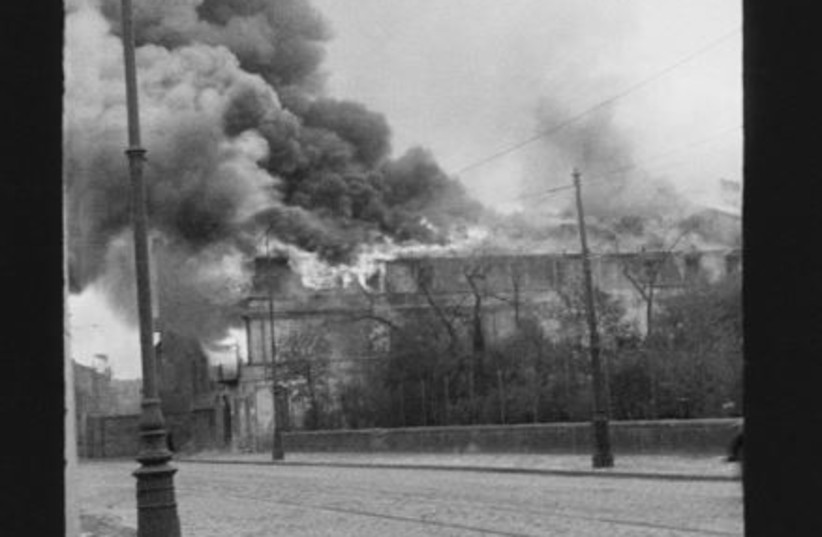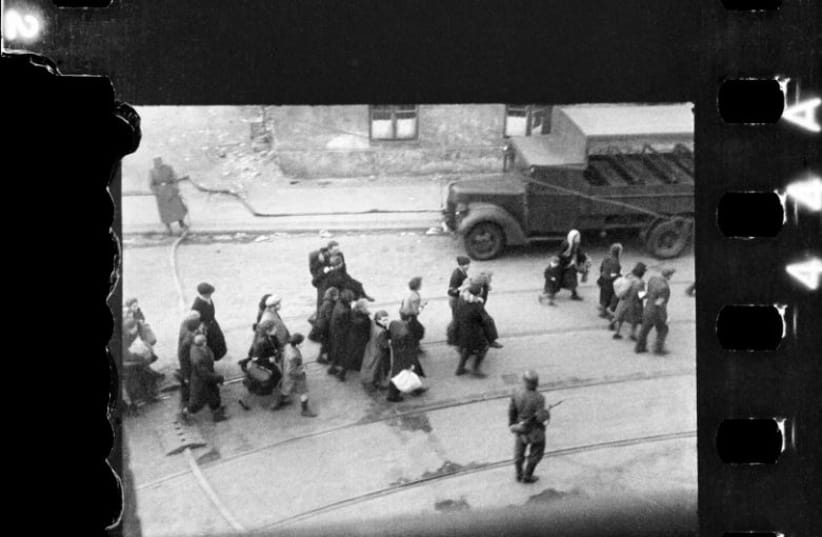Never-before-seen images of the 1943 Warsaw Ghetto Uprising, where Jews revolted against the Nazis during the Holocaust before being crushed by German troops, were unveiled at a Jewish museum in Warsaw, Poland, following their shocking discovery.
The POLIN Museum of the History of Polish Jews revealed the details behind the discovery of these pictures, which were original negatives taken in 1943.
Overall, the negatives include 33 images depicting the ghetto. Twelve of these photos have already been shared at the Jewish Historical Institute and the Holocaust Museum in Washington. However, 21 of these had never been seen before.
Where did these pictures of the Warsaw Ghetto Uprising come from?
There are already several famous pictures from the Warsaw Ghetto Uprising. However, what makes these newly-found photographs so unique is that they were some of the only ones not taken by the Nazis themselves.


Rather, these pictures were all taken by Zbigniew Leszek Grzywaczewski, a then-23-year-old photographer who worked as a firefighter in the Warsaw Fire Brigade. The dates of his time in the ghetto are unknown, but it is believed by the museum that he was there between April 21 and May 15, as the Nazis began setting the ghetto on fire. His job that day was to help make sure the fire in the ghetto didn't spread outside to the rest of the city.
The pictures were found by Grzywaczewski's son, Maciej Grzywaczewski, who was asked by museum curators to look through his father's archives.
These negatives were in the very last box.
His pictures show the smoke over the ghetto, burning buildings, firefighters at work and people being sent to holding areas, among others. They were also shown to be very imperfect, with images blurred as if taken in a hurry or while hiding somewhere.
This stresses how important Grzywaczewski felt it was to take these pictures.
At the very least, he certainly was impacted by what he saw there.
Writing in his own diary, he noted: "The image of these people being dragged out of there [out of the bunkers—ZSK] will stay with me for the rest of my life. Their faces […] with a deranged, absent look. […] figures staggering from hunger and dismay, filthy, ragged. Shot dead en masse; those still alive falling over the bodies of the ones who have already been annihilated."
"The image of these people being dragged out of there [out of the bunkers—ZSK] will stay with me for the rest of my life. Their faces […] with a deranged, absent look. […] figures staggering from hunger and dismay, filthy, ragged. Shot dead en masse; those still alive falling over the bodies of the ones who have already been annihilated."
Zbigniew Leszek Grzywaczewski
The photos will be exhibited in the upcoming exhibit Around Us a Sea of Fire. The Fate of Jewish Civilians During the Warsaw Ghetto Uprising, which opens April 18.
